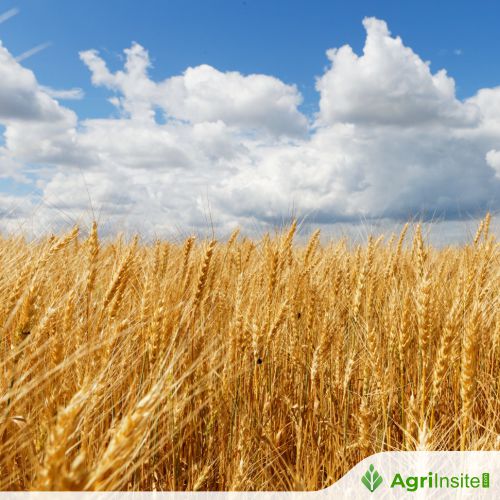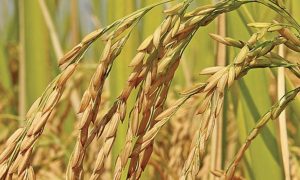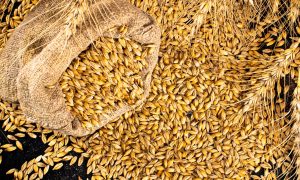Zimbabwe achieves record-breaking wheat yield

Zimbabwe achieved a record wheat yield of 563,961 tonnes in 2024, surpassing its annual requirement of 360,000 tonnes. This milestone results from government policies, timely input distribution, irrigation, and private sector involvement. Modern equipment, training, and mechanization reduced losses.
The year 2024 will be remembered as a pivotal moment in Zimbabwe’s agricultural history, marking the achievement of a record-breaking wheat yield of 563 961 tonnes.
This impressive figure not only surpasses the previous season’s yield of 467 000 tonnes, but also stands as the highest wheat production level since the country began cultivating the crop in 1966.
For the first time, Zimbabwe has produced more wheat than the national annual requirement of 360 000 tonnes, effectively ensuring self-sufficiency and maintaining a modest surplus.
The success in wheat production can be attributed to a combination of strategic interventions and supportive Government policies that aimed to create an enabling environment for farmers.
One of the most significant drivers was the improved access to financial services, which allowed farmers to obtain the necessary inputs and resources on time.
This financial support was complemented by the Government’s proactive measures to ensure that farmers received their inputs without delay.
By prioritising essential resources such as seeds and fertilisers, the Government laid the foundation for a successful harvest.
Moreover, the Government’s collaboration with key stakeholders played a crucial role in realising this achievement.
Notably, partnerships with ZESA and the Zimbabwe National Water Authority were instrumental in providing uninterrupted electricity supply and adequate irrigation water.
This collaboration ensured that farmers had the necessary resources throughout the growing season.
The strategy involved tracking seventeen key enablers during the winter season.
These included prioritising electricity supply for farmers, implementing improved water management practices, and focusing on pest control.
Additionally, access to seeds, fertilisers, finance, and modern farming equipment was improved.
This multifaceted approach not only boosted production, but also fostered a sense of security among farmers, who were eager to contribute to the national goal of self-sufficiency.
On the mechanisation front, the Government ensured that all farmers who required combine harvesters were linked with suppliers, and grain dryers were made available at Grain Marketing depots. The availability of modern equipment was crucial in preventing crop damage, particularly as early rains threatened to disrupt the harvest.
Furthermore, the Government provided over 300 combine harvesters to facilitate harvesting, reflecting its commitment to reducing losses and maximizing yields.
Zimbabwe’s achievement in wheat production is particularly noteworthy as the country stands alongside Ethiopia as one of only two African nations to attain wheat self-sufficiency.
This accomplishment is the result of significant Government efforts to ramp up agricultural production through radical reforms and active participation from both the private and public sectors.
The Government also encouraged private sector involvement, setting a target for companies to contribute at least 40 per cent of their annual raw material requirements, a goal that was successfully met this year.
These initiatives were not only aimed at increasing wheat production, but also at driving broader agricultural transformation.
The focus on self-sufficiency aligns with the Government’s vision for rural development, which emphasises employment creation and economic growth.
By promoting local production, the Government seeks to preserve jobs within the upstream manufacturing, distribution, logistics and service industries, including insurance sectors.
To support farmers further, Agritex extension teams were mobilised to provide on-the-ground training in wheat-growing areas.
These teams educated farmers on various essential practices, including calibration of planting machines, effective fertiliser application, and disease control strategies.
Extension officers were equipped with motorbikes to enhance their mobility, enabling them to reach more farmers in remote areas.
They also received modern tablets to stay updated on the latest agricultural developments, along with periodic allocations of mobile data to facilitate communication and access to vital information.
Despite these successes, challenges remained. Some regions faced issues such as veld fires and early rains that threatened to damage the crop; however, these factors did not result in significant losses.
Farmers expressed concerns regarding delays in payments after delivering their wheat to GMB and other markets, highlighting the need for improved systems to ensure timely compensation for their efforts.
The attainment of wheat self-sufficiency is firmly grounded in the Government’s agricultural transformation agenda, which is supported by active participation from both public and private sectors.
According to the Ministry of Lands, Agriculture, Fisheries, Water and Rural Development, achieving food self-sufficiency, import substitution, and increased exports hinges on a vibrant water sector.
This sector must be managed in a robust, transparent, and accountable manner to ensure sustainable agricultural practices.
Irrigation has been identified as a critical component in enhancing wheat production.
As the Government looks to the future, it is committed to advocating for efficient water use through advanced irrigation systems.
With proper funding, early distribution of inputs, and continuous training on essential agricultural practices, the country is poised to maintain its surplus production.
Provincial contributions to this record harvest were significant, showcasing the diverse capabilities of Zimbabwe’s agricultural landscape.
Mashonaland West led the way with 174 580 tonnes harvested from 33 303 hectares, followed by Mashonaland Central with 150 007 tonnes from 29 574 hectares.
Other notable contributions included Mashonaland East with 98 915 tonnes, Manicaland with 45,869 tonnes, and Midlands with 66 446 tonnes.
Even regions like Masvingo and Matabeleland North made valuable contributions, demonstrating the widespread commitment to achieving national agricultural goals.
To read more about Wheat News continue reading Agriinsite.com
Source : ZWNews














